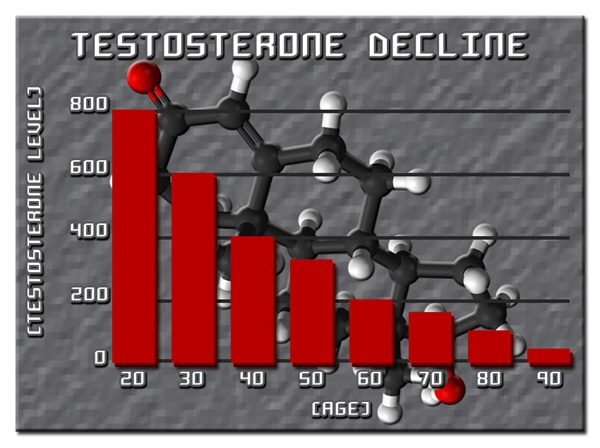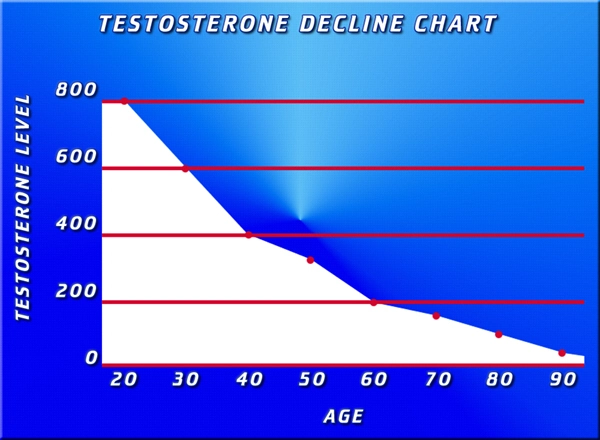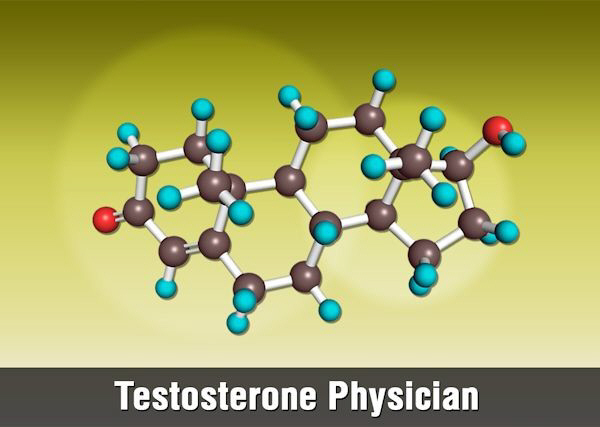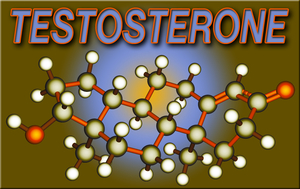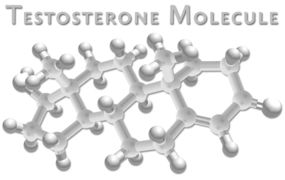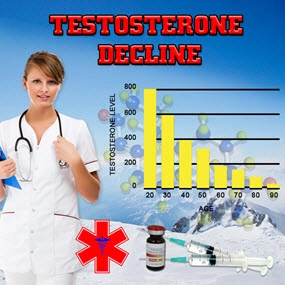Introduction
Stendra (avanafil) is a phosphodiesterase type 5 (PDE5) inhibitor used primarily for the treatment of erectile dysfunction (ED). Given its widespread use among American males, understanding its effects on cardiovascular health is crucial, particularly in those with pre-existing cardiovascular disease (CVD). This article delves into the pharmacological impact of avanafil on blood pressure and heart rate in this demographic, offering insights that are vital for healthcare providers and patients alike.
Pharmacological Mechanism of Avanafil
Avanafil works by selectively inhibiting PDE5, an enzyme responsible for the degradation of cyclic guanosine monophosphate (cGMP) in the corpus cavernosum. By increasing cGMP levels, avanafil promotes smooth muscle relaxation and increased blood flow, which is essential for achieving and maintaining an erection. However, its systemic effects on cardiovascular parameters are of significant interest due to the interconnectedness of PDE5 inhibition and cardiovascular function.
Effects on Blood Pressure
In clinical trials, avanafil has demonstrated a minimal impact on blood pressure in healthy individuals. However, its effects in American males with CVD warrant closer examination. Studies indicate that avanafil causes a modest reduction in systolic and diastolic blood pressure, typically ranging from 2 to 6 mmHg. This effect is less pronounced compared to other PDE5 inhibitors, which is attributed to avanafil's rapid onset and shorter half-life.
For American males with hypertension, the use of avanafil requires careful monitoring. Although the drug's impact on blood pressure is generally mild, it can be amplified when combined with antihypertensive medications. Therefore, healthcare providers must consider the patient's overall cardiovascular health and medication regimen before prescribing avanafil.
Impact on Heart Rate
Avanafil's effect on heart rate in American males with CVD is another critical aspect to consider. Clinical data suggest that avanafil does not significantly alter heart rate in most patients. However, in individuals with underlying heart conditions, such as coronary artery disease, there may be a slight increase in heart rate, typically less than 5 beats per minute.
This modest increase is generally well-tolerated, but it underscores the importance of a thorough cardiovascular assessment before initiating treatment. For patients with arrhythmias or other heart rate irregularities, the potential for even minor changes in heart rate necessitates close monitoring and possibly alternative treatment options.
Clinical Implications and Safety Considerations
The safety profile of avanafil in American males with CVD is generally favorable, but it is not without risks. The drug's cardiovascular effects, though mild, can be significant in certain populations. Therefore, healthcare providers must conduct a comprehensive evaluation of each patient's cardiovascular status and medication profile.
Patients with severe cardiovascular conditions, such as unstable angina or recent myocardial infarction, should avoid avanafil. Additionally, the concomitant use of nitrates is contraindicated due to the risk of severe hypotension. Educating patients about these risks and ensuring they understand the importance of reporting any cardiovascular symptoms during treatment is crucial.
Conclusion
In conclusion, avanafil offers a valuable treatment option for American males with ED, including those with CVD. Its minimal impact on blood pressure and heart rate makes it a safer choice compared to other PDE5 inhibitors. However, careful patient selection, thorough cardiovascular assessment, and vigilant monitoring are essential to mitigate potential risks. By understanding the pharmacological effects of avanafil on cardiovascular parameters, healthcare providers can better serve their patients, ensuring both efficacy and safety in the management of ED.
References
1. Goldstein, I., et al. "Avanafil, a new rapid-onset phosphodiesterase 5 inhibitor for the treatment of erectile dysfunction." Expert Opinion on Investigational Drugs, vol. 20, no. 10, 2011, pp. 1327-1340.
2. Kloner, R. A., et al. "Cardiovascular safety of avanafil, a new PDE5 inhibitor for the treatment of erectile dysfunction." Expert Opinion on Drug Safety, vol. 11, no. 4, 2012, pp. 651-662.
3. Corona, G., et al. "Cardiovascular risk associated with testosterone-boosting medications: a systematic review and meta-analysis." Expert Opinion on Drug Safety, vol. 13, no. 10, 2014, pp. 1327-1351.
Contact Us Today For A Free Consultation

- Unveiling the Power of Stendra: Transformative Experiences of American Men [Last Updated On: February 24th, 2025] [Originally Added On: February 24th, 2025]
- A Revolutionary Leap: Transforming Erectile Dysfunction Treatment with Avanafil’s Stendra [Last Updated On: February 25th, 2025] [Originally Added On: February 25th, 2025]
- Accelerating the Pathway to Pleasure: The Swift Potency of Stendra [Last Updated On: February 26th, 2025] [Originally Added On: February 26th, 2025]
- Unraveling Avanafil: The Science and Marvel Behind Stendra [Last Updated On: February 27th, 2025] [Originally Added On: February 27th, 2025]
- Unraveling the Journey of Stendra Avanafil: From Laboratory Inception to Market Implementation [Last Updated On: February 28th, 2025] [Originally Added On: February 28th, 2025]
- Unraveling the Efficacy: Comparing Stendra against Other Leading Dysfunctions Therapies [Last Updated On: February 28th, 2025] [Originally Added On: February 28th, 2025]
- Understanding and Managing Stendra: A Comprehensive Guide for American Males [Last Updated On: February 28th, 2025] [Originally Added On: February 28th, 2025]
- Unveiling the Mechanisms and Molecular Marvels of Avanafil: The Working Principle Behind Stendra [Last Updated On: March 1st, 2025] [Originally Added On: March 1st, 2025]
- Unlocking Potentials with Avanafil: Breakthroughs in Erectile Dysfunction Treatment [Last Updated On: March 2nd, 2025] [Originally Added On: March 2nd, 2025]
- Exploring Stendra (Avanafil): A New Frontier in Erectile Dysfunction Treatment for Enhanced Intimacy and Rapid Onset Action [Last Updated On: March 3rd, 2025] [Originally Added On: March 3rd, 2025]
- Stendra: A Fast-Acting, Efficient Erectile Dysfunction Treatment [Last Updated On: March 4th, 2025] [Originally Added On: March 4th, 2025]
- Avanafil: A New, Fast-Acting PDE5 Inhibitor for Erectile Dysfunction Treatment [Last Updated On: March 5th, 2025] [Originally Added On: March 5th, 2025]
- Enhancing Stendra's Effectiveness with Lifestyle Changes for American Men [Last Updated On: March 6th, 2025] [Originally Added On: March 6th, 2025]
- Stendra: A Modern Approach to Treating Erectile Dysfunction with Rapid Onset and Fewer Side Effects [Last Updated On: March 7th, 2025] [Originally Added On: March 7th, 2025]
- Advancements in ED Treatment: The Role of Fast-Acting Stendra in Men's Health [Last Updated On: March 8th, 2025] [Originally Added On: March 8th, 2025]
- Stendra: Rapid Action ED Medication with Superior Safety Profile and Clinical Effectiveness [Last Updated On: March 9th, 2025] [Originally Added On: March 9th, 2025]
- Future of ED Treatment: Innovations Inspired by Stendra Avanafil's Success [Last Updated On: March 11th, 2025] [Originally Added On: March 11th, 2025]
- Avanafil: The Vanguard of Rapid and Precise ED Treatment for American Men [Last Updated On: March 12th, 2025] [Originally Added On: March 12th, 2025]
- Unveiling the Rapid Response: The Science Behind Stendra's Quick Action [Last Updated On: March 13th, 2025] [Originally Added On: March 13th, 2025]
- Unlocking the Potential of Stendra: A Comprehensive Guide to Enhancing Male Sexual Performance [Last Updated On: March 15th, 2025] [Originally Added On: March 15th, 2025]
- Avanafil (Stendra): Rapid, Effective ED Treatment for American Males [Last Updated On: March 18th, 2025] [Originally Added On: March 18th, 2025]
- Stendra (Avanafil): Rapid, Effective ED Treatment with Minimal Side Effects [Last Updated On: March 18th, 2025] [Originally Added On: March 18th, 2025]
- Stendra: Rapid-Onset ED Solution Enhancing American Men's Sexual Health and Confidence [Last Updated On: March 19th, 2025] [Originally Added On: March 19th, 2025]
- Avanafil vs. Viagra: Comparing ED Medications for American Men [Last Updated On: March 19th, 2025] [Originally Added On: March 19th, 2025]
- Stendra Dosage Guide: Optimizing ED Treatment for American Males [Last Updated On: March 20th, 2025] [Originally Added On: March 20th, 2025]
- Avanafil: Benefits for ED and Cardiovascular Health in American Males [Last Updated On: March 20th, 2025] [Originally Added On: March 20th, 2025]
- Avanafil: Enhancing Sexual Health and Confidence in American Males with ED [Last Updated On: March 20th, 2025] [Originally Added On: March 20th, 2025]
- Stendra for Erectile Dysfunction: Costs, Coverage, and Economic Considerations [Last Updated On: March 20th, 2025] [Originally Added On: March 20th, 2025]
- Stendra Avanafil: Fast-Acting ED Treatment Enhancing Men's Quality of Life [Last Updated On: March 20th, 2025] [Originally Added On: March 20th, 2025]
- Stendra: Fast-Acting ED Solution Enhances American Men's Sexual Health and Quality of Life [Last Updated On: March 20th, 2025] [Originally Added On: March 20th, 2025]
- Stendra: Fast-Acting ED Treatment with Proven Efficacy and Safety [Last Updated On: March 21st, 2025] [Originally Added On: March 21st, 2025]
- Stendra: Rapid, Effective ED Treatment with Minimal Side Effects [Last Updated On: March 21st, 2025] [Originally Added On: March 21st, 2025]
- Avanafil: Fast-Acting ED Treatment with Favorable Safety Profile for American Males [Last Updated On: March 21st, 2025] [Originally Added On: March 21st, 2025]
- Stendra: Fast-Acting ED Solution for American Men - Mechanism and Benefits [Last Updated On: March 22nd, 2025] [Originally Added On: March 22nd, 2025]
- Stendra Avanafil: Revolutionizing ED Treatment and Enhancing Romantic Intimacy [Last Updated On: March 22nd, 2025] [Originally Added On: March 22nd, 2025]
- Telemedicine Revolutionizes ED Treatment with Stendra: A Comprehensive Guide [Last Updated On: March 23rd, 2025] [Originally Added On: March 23rd, 2025]
- Stendra: Personalized Approach to Treating Erectile Dysfunction Effectively [Last Updated On: March 23rd, 2025] [Originally Added On: March 23rd, 2025]
- Stendra (Avanafil): Fast-Acting ED Solution for American Men [Last Updated On: March 24th, 2025] [Originally Added On: March 24th, 2025]
- Stendra: Revolutionizing ED Treatment with Rapid Onset and Minimal Side Effects [Last Updated On: March 24th, 2025] [Originally Added On: March 24th, 2025]
- Avanafil: Rapid Onset, Customizable Dosage for Modern Men's ED Treatment [Last Updated On: March 24th, 2025] [Originally Added On: March 24th, 2025]
- Stendra: Rapid-Onset ED Treatment Enhancing American Males' Quality of Life [Last Updated On: March 24th, 2025] [Originally Added On: March 24th, 2025]
- Stendra: Enhancing Life Quality Beyond ED Treatment for American Men [Last Updated On: March 24th, 2025] [Originally Added On: March 24th, 2025]
- Avanafil (Stendra) Safety Profile: Insights for American Males with ED [Last Updated On: March 24th, 2025] [Originally Added On: March 24th, 2025]
- Stendra: Rapid-Onset ED Treatment Enhances Sexual Health and Quality of Life [Last Updated On: March 24th, 2025] [Originally Added On: March 24th, 2025]
- Stendra: Fast-Acting, Effective ED Treatment with Minimal Side Effects [Last Updated On: March 24th, 2025] [Originally Added On: March 24th, 2025]
- Stendra: Rapid-Release ED Treatment Enhancing American Men's Quality of Life [Last Updated On: March 24th, 2025] [Originally Added On: March 24th, 2025]
- Avanafil (Stendra): Rapid ED Treatment with Favorable Safety Profile in American Males [Last Updated On: March 24th, 2025] [Originally Added On: March 24th, 2025]
- Stendra: A Fast-Acting PDE5 Inhibitor for Treating Erectile Dysfunction in American Men [Last Updated On: March 24th, 2025] [Originally Added On: March 24th, 2025]
- Stendra: A Fast-Acting, Safe Solution for Erectile Dysfunction Treatment [Last Updated On: March 25th, 2025] [Originally Added On: March 25th, 2025]
- Stendra: Rapid, Effective ED Treatment with Minimal Side Effects for American Men [Last Updated On: March 25th, 2025] [Originally Added On: March 25th, 2025]
- Avanafil vs. Viagra and Celsius: Rapid Onset and Benefits for ED Treatment [Last Updated On: March 25th, 2025] [Originally Added On: March 25th, 2025]
- Stendra: Rapid Solution for Performance Anxiety in American Men [Last Updated On: March 25th, 2025] [Originally Added On: March 25th, 2025]
- Avanafil (Stendra): Rapid, Effective ED Treatment with Favorable Side Effects [Last Updated On: March 25th, 2025] [Originally Added On: March 25th, 2025]
- Stendra: Rapid-Acting ED Solution with Favorable Side Effect Profile [Last Updated On: March 26th, 2025] [Originally Added On: March 26th, 2025]
- Stendra Avanafil: Rapid Onset ED Treatment with Future Innovations [Last Updated On: March 26th, 2025] [Originally Added On: March 26th, 2025]
- Stendra: Enhancing Libido and Sexual Health in American Males [Last Updated On: March 26th, 2025] [Originally Added On: March 26th, 2025]
- Stendra: Fast-Acting ED Solution for American Males - Efficacy, Dosage, and Safety [Last Updated On: March 27th, 2025] [Originally Added On: March 27th, 2025]
- Stendra: Fast-Acting ED Solution - Efficacy, Safety, and Patient Satisfaction [Last Updated On: March 27th, 2025] [Originally Added On: March 27th, 2025]
- Stendra: Rapid, Safe ED Treatment Enhancing American Men's Sexual Health [Last Updated On: March 27th, 2025] [Originally Added On: March 27th, 2025]
- Stendra: Beyond ED - Potential Cardiovascular Benefits for American Males [Last Updated On: March 27th, 2025] [Originally Added On: March 27th, 2025]
- Stendra: Rapid ED Treatment with Mild Side Effects and Safety Considerations [Last Updated On: March 27th, 2025] [Originally Added On: March 27th, 2025]
- Stendra and Exercise: Enhancing ED Treatment with Lifestyle Integration [Last Updated On: March 28th, 2025] [Originally Added On: March 28th, 2025]
- Avanafil (Stendra): Rapid-Acting ED Treatment Enhancing Blood Flow in American Males [Last Updated On: March 28th, 2025] [Originally Added On: March 28th, 2025]
- Stendra: Enhancing Sexual Health and Life Quality in American Men [Last Updated On: March 28th, 2025] [Originally Added On: March 28th, 2025]
- Stendra: Rapid, Effective ED Treatment Enhances Sexual Confidence and Relationships [Last Updated On: March 28th, 2025] [Originally Added On: March 28th, 2025]
- Stendra (Avanafil) Guide: Dos and Don'ts for Effective ED Treatment [Last Updated On: March 29th, 2025] [Originally Added On: March 29th, 2025]
- Stendra: Rapid, Effective ED Treatment Enhances Intimacy and Relationship Dynamics [Last Updated On: March 29th, 2025] [Originally Added On: March 29th, 2025]
- Avanafil: Revolutionizing ED Treatment with Rapid Onset and High Efficacy [Last Updated On: March 30th, 2025] [Originally Added On: March 30th, 2025]
- Stendra for ED: Preparation, Discussion, and Management with Your Doctor [Last Updated On: March 30th, 2025] [Originally Added On: March 30th, 2025]
- Avanafil: Fast-Acting ED Solution with Flexible Dosing and Safety Profile [Last Updated On: March 30th, 2025] [Originally Added On: March 30th, 2025]
- Stendra (Avanafil): Rapid, Effective ED Treatment Enhancing Male Sensuality and Confidence [Last Updated On: March 30th, 2025] [Originally Added On: March 30th, 2025]
- Stendra: Rapid Onset and High Efficacy for Treating Erectile Dysfunction [Last Updated On: March 31st, 2025] [Originally Added On: March 31st, 2025]
- Avanafil (Stendra): Fast-Acting ED Solution for American Men [Last Updated On: April 1st, 2025] [Originally Added On: April 1st, 2025]
- Stendra (Avanafil): Fast-Acting ED Treatment for American Males [Last Updated On: April 1st, 2025] [Originally Added On: April 1st, 2025]
- Stendra: Rapid-Acting ED Solution - Efficacy, Safety, and Usage for American Men [Last Updated On: April 2nd, 2025] [Originally Added On: April 2nd, 2025]
- Avanafil (Stendra): Rapid, Effective ED Treatment for American Men [Last Updated On: April 7th, 2025] [Originally Added On: April 7th, 2025]
- Stendra: Enhancing Sexual Performance and Self-Esteem in American Men [Last Updated On: April 7th, 2025] [Originally Added On: April 7th, 2025]
- Stendra: Rapid, Effective ED Treatment for American Men's Sexual Health [Last Updated On: April 7th, 2025] [Originally Added On: April 7th, 2025]
- Stendra: Rapid-Acting Solution for Erectile Dysfunction in American Males [Last Updated On: April 9th, 2025] [Originally Added On: April 9th, 2025]
- Stendra and Beyond: Exploring ED Treatments and Holistic Health Approaches [Last Updated On: April 9th, 2025] [Originally Added On: April 9th, 2025]
Word Count: 621

